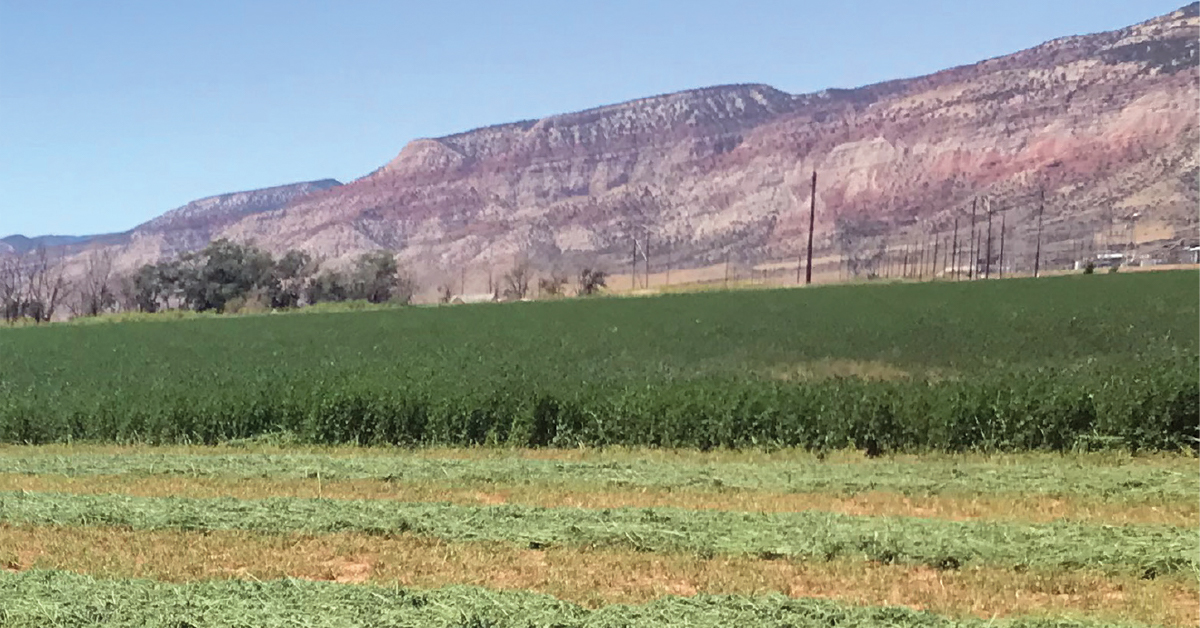
How do we determine when an alfalfa stand should be rotated? I like to think of “rotation” as a renewal of the alfalfa plant and the surrounding environment.
To determine if the alfalfa stand is ready to rotate, the alfalfa experts suggest that a healthy stand has a minimum of twenty-five shoots from two plants per square foot for dryland alfalfa, and forty shoots from three plants per square foot for irrigated alfalfa. A rule of thumb I use is that most alfalfa stands are productive for twenty to twenty-four cuttings.
Alfalfa fields ideally should be planted to another crop for two years, with a very minimum of one year. Planting alfalfa back to back should be avoided if at all possible as research has shown that yields may be reduced up to 30% in the life of the new alfalfa stand.
What are some of the benefits of alfalfa rotation besides eliminating an old, worn out alfalfa plant? In Managing Diseases of Alfalfa, Paul Vincelli and Ray Smith of the University of Kentucky writes, “most alfalfa pathogens do not survive well in the absence of a host plant…therefore, rotating to another crop for several years can help reduce pathogen populations in the field. Corn, small grains, and forage grasses are good rotation crops for reducing populations of alfalfa pathogens.” The same is true for nematodes, cutworms, weevil, aphid, and other alfalfa pests.
"Most Alfalfa pathogens do not survive well in the absence of a host plant...therefore, rotating to another crop for several years can help reduce pathogen populations in the field."
There are many ways to rotate an old alfalfa stand. The most important thing is to kill all the existing old alfalfa to eliminate autotoxicity and the host for pathogens. Jeff Volenec and Keith Johnson of Purdue University in Managing Alfalfa Autotoxicity write that “autotoxicity occurs when a plant releases a compound that prevents germination or slows the growth of the same plant species. The chemical factor(s) causing alfalfa autotoxicity have been studied, but the identity of the compounds causing it remains unclear. Seedlings 8 to 16 inches from an existing alfalfa plant often survive, but their shoot growth is usually stunted and root development is poor.”
Newly seeded alfalfa stands can be thickened up with more seed for up to one year without the effects of autotoxicity.
Find an IFA Crop Advisor in your area
Written by Krea Mecham, Agronomy Sales Consultant, IFA Southern Utah Agronomy Center, and originally published in the IFA Cooperator magazine (vol. 86, no. 3) Fall 2020.

